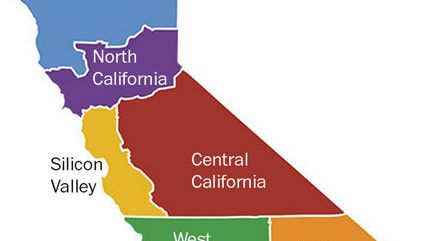Will Six Californias Be Better Than One?
Many feel unrepresented by the state legislature.

SACRAMENTO — When most people think of secession, they think of the type of disturbing events unfolding in the Ukraine. But efforts to break up political boundaries could be coming to California, albeit in a laid-back and peaceful manner, as Silicon Valley venture capitalist Tim Draper circulates an initiative to chop up the state into pieces.
Efforts to rearrange political lines seem almost as old as the hills and rivers that form natural boundaries. Nations and states have different cultures, economies and politics, of course. Supporters argue that California – where voters in the dominant Bay Area and Los Angeles have far different priorities than Californians in other areas – ought to be broken into six states so everyone can pursue their dreams. (It's not as if San Diegans couldn't still spend the weekend in Napa.)
No U.S. state has been divided since the Civil War. But this idea sounds less antiquated after considering that just one of California's 58 counties (San Bernardino) is larger than nine U.S. states and four of them combined. Supporters have gotten the go-ahead from the secretary of state to begin collecting signatures, so this idea could spark a thought experiment.
Even small U.S. states have differences, but California's are arguably so extreme that it's hard to imagine any way to reconcile them. There are efforts in the rural far north to join with some Oregon counties and become the state of Jefferson. They already have a flag. Folks there say California's land-use restrictions are leaving them in penury.
That movement lacks political clout, but what happens if state voters say yes to a divorce? It's hard to imagine they would do so given that urban residents can easily out-vote disgruntled folks in the hinterlands. It seems likely that the legislature would fight this and unlikely that Congress would accept a break up. But campaigns – provided they are serious, and that's far from clear in this case – can lead to reforms that address simmering frustrations.
The initiative seems to recognize those points: "The legal processes for division of the state will take time. In the interim, we the people desire to empower local governments and lessen the role of Sacramento over every aspect of our lives, to encourage regional cooperation, and to begin the process of new state identification."
A Siskiyou secessionist this writer once interviewed argued that California really needs a different set of regulatory rules for rural residents. Ranchers living miles from the closest neighbor are frustrated by laws drafted to address property owners living in Oakland or Encinitas.
Wannabe reformers have long talked about a California break up, but the proposed number of states and borders have varied wildly. This initiative does a better job than most on the boundaries. For instance, it combines the far-north counties into the state of Jefferson, which is dead on. Another sensible creation is Central California, which combines the agricultural San Joaquin Valley with the central Sierra Nevada region.
It handles the Southern California political divide by placing San Diego, Orange, San Bernardino, Riverside and Imperial counties into South California. The culturally more liberal Los Angeles County joins some of the Central Coast to become West California. The political thinking is sensible, but it's still hard to imagine Southern California without Hollywood. The proposal also creates the state of Silicon Valley with counties in the Bay Area and around Monterey.
The biggest oddity is North California, which cuts from Lake Tahoe to the Pacific and grabs the Sacramento area, Napa, Sonoma and Marin. The latter three counties seem inextricably linked to San Francisco. Then again, this plan is more about having a conversation about tax policy, regulation and local control and less about precise boundaries.
"(V)ast parts of our state are poorly served by a representative government dominated by a large number of elected representatives from a small part of our state," the initiative explains. That's something to talk about now, before these disputes lead to an angry divorce.


Show Comments (50)